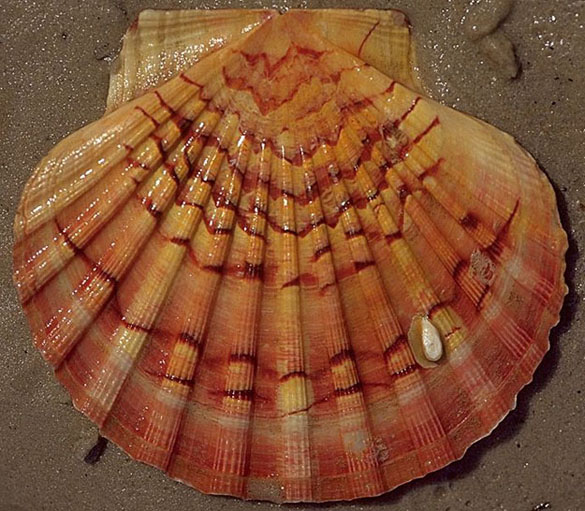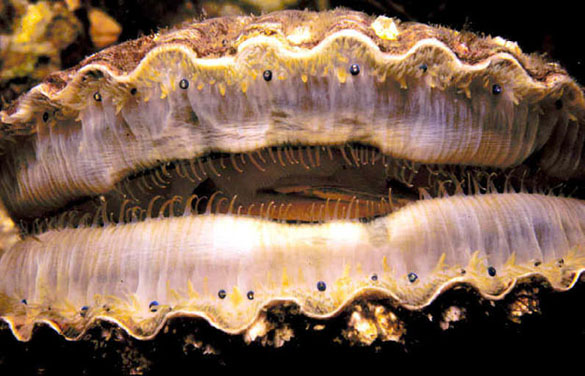 The delicious scallop has a long, long history. Wooster’s variety, known as Aviculopecten subcardiformis, is about 345 million years old. The beauty above was found in the Logan Formation, a conglomeratic sandstone that underlies much of the city, including the college. This particular fossil is preserved as an external mold, meaning the shell is dissolved away and only an impression remains in the surrounding sediment. Note that this preservation is still so good that we can count all the ribs and even growth lines.
The delicious scallop has a long, long history. Wooster’s variety, known as Aviculopecten subcardiformis, is about 345 million years old. The beauty above was found in the Logan Formation, a conglomeratic sandstone that underlies much of the city, including the college. This particular fossil is preserved as an external mold, meaning the shell is dissolved away and only an impression remains in the surrounding sediment. Note that this preservation is still so good that we can count all the ribs and even growth lines.
Scallops are characterized by a nearly-symmetrical shell. They have extensions along the hingeline (at the top of the image) that are commonly called “ears” and technically termed auricles. They have one large muscle (adductor) used to close the shell. It is relatively large and the part of the clam we find so tasty.
Many modern scallops use that large adductor muscle to clap the valves together when they are threatened, enabling them to swim short distances. As an early warning system to detect predators (including us, I suppose), they have rows of tiny eyes in the soft tissue around the edge of the shell (see below).
We can’t tell if our ancient scallop was able to see its enemies and swim away. It does, though, take us back to a time when a warm shallow sea covered our little patch of Ohio.





Pingback: Wooster Geologists » Blog Archive » Wooster’s Fossil of the Week: A spiriferinid brachiopod (Logan Formation, Lower Carboniferous, Ohio)